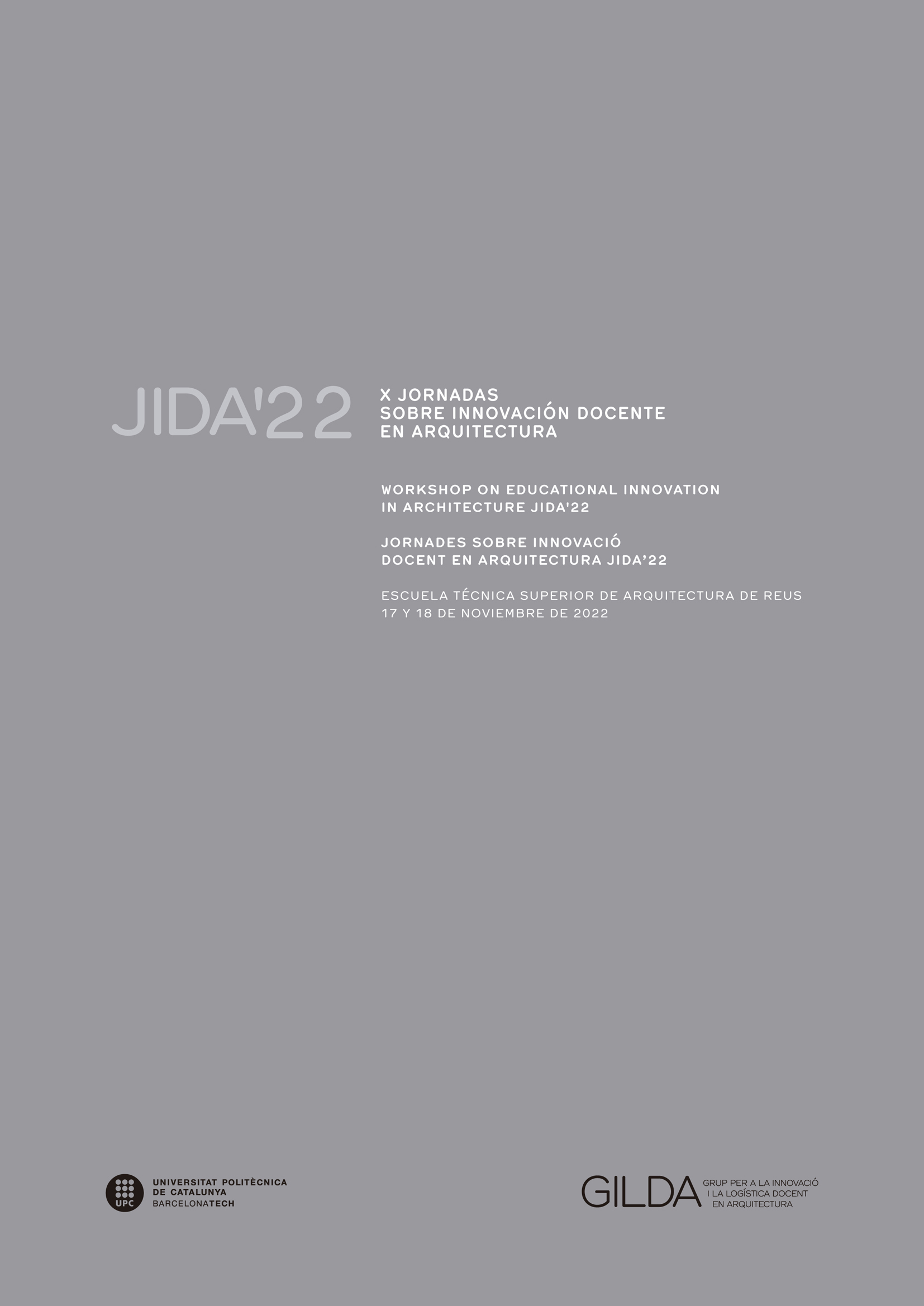Vertical social workshop
collective didactic exercise in the appropriation of public space
DOI:
https://doi.org/10.5821/jida.2022.11664Keywords:
public space, the right to the city , habitat just, urban revitalization, design educationAbstract
The Vertical Social Workshop proposes the recognition of an expanding territory, which in most cases grows without adequate planning, in conditions of self-management that gradually consolidate fragments of the city that are added to the economic, cultural and social dynamics of the same. In the instrumental pedagogical part, the exercise is located within the academic programming of the 2022-22 school year of the undergraduate programme of the UMNSH Faculty of Architecture, with the objective of carrying out a short workshop in which all the students of the institution participated, organised in teams, carrying out an intervention project in the public space in areas of the city characterised by high marginalisation and which were considered within the support programme of the Ministry of Territorial Development (SEDATU). The academic results were very positive and in their materialisation they continued with the consolidation of neighbourhood improvement.
References
ALARCÓN GONZÁLEZ, L. y MONTERO FERNÁNDEZ, F.J. (2019). Lessons between apprentices.Vertical structure in the teaching of architecture. Zarch. <https://doi.org/10.26754/ojs_zarch/zarch.201912353>
ANPADEH. (2021, abril). Manual General para los Procesos de Acreditación de Programas de las Disciplinas del Espacio Habitable de la ANPADEH 2021. <http://www.anpadeh.org.mx/interiores/documentos_d.php>
BARNARD, P. (2010). Vertical tutoring. Grosvenor House.
BRIDGES, A. (2006). A Critical Review of Problem Based Learning in Architectural Education. Communicating Space(s) [24th eCAADe Conference Proceedings / ISBN 0-9541183-5-9] Volos (Greece) 6-9 September 2006, p. 182-189. <http://papers.cumincad.org/cgi-bin/works/BrowseTree=series:acadia+year:2011/Show?2006_182>
CASTELLANO-PULIDO, F.; GAVILANES-VELAZ-DE-MEDRANO, J.; MINGUET, J. & CARRASCO RODRIGUEZ, F. (2020). Taller vertical y juego de roles en el aprendizaje de programas arquitectónicos emergentes = Vertical workshop and role-playing in the learning of emerging architectural programs. <https://doi.org/10.5821/jida.2020.9463>
CATINA, A. (2020). Dialogue and studio space: The architectural design studio as the setting for continuous reflection. Journal of Applied Learning & Teaching, 3(1), Article 1. <http://dx.doi.org/doi.10.37074/jalt.2020.3.1.12>
DE SOUZA SÁNCHEZ, P.M. (2021). Taller vertical y metodología ABP en la realización de proyectos de arquitectura cinética e interactiva con patrones de pliegue estructurales, p. 49-66. <https://doi.org/10.5281/zenodo.6370857>
DRURY, E. (2013, enero 8). A guide to vertical teaching. The Guardian. <https://www.theguardian.com/teacher-network/teacher-blog/2013/jan/08/vertical-teaching-guide-early-exam-entry>
EDUTRENDS RETOS. (s. f.). Observatorio | Instituto para el Futuro de la Educación. Recuperado 11 de septiembre de 2022, de <https://observatorio.tec.mx/edutrendsabr>
FOURNIERE, H. (2017). Trends in urban resilience: 2017. United Nations Human Settlements Programme (UN-Habitat). <https://unhabitat.org/books/trends-in-urban-resilience-2017>
LOBATO VALDESPINO, J.C. y FLORES ROMERO, J.H. (2021). Taller vertical, diseño de hábitat resiliente indígena: Experiencia docente conectada, p. 94-103. <https://doi.org/10.5821/jida.2021.10516>
MOHAMMED, F. y ALLAH, A.A. (2019). The Integration of Structural Knowledge in Studio Design Projects: An Assessment Curriculum in: Architecture Course in SUST. Journal of Engineering and Computer Science (JECS), 13(1), p. 59-71.
OVESEN, N. (2015). THE PROBLEM REVISITED: TEACHING THE PBL APPROACH TO DESIGN STUDENTS. DS 82: Proceedings of the 17th International Conference on Engineering and Product Design Education (E&PDE15), Great Expectations: Design Teaching, Research & Enterprise, Loughborough, UK, 03-04.09.2015, p. 500-505.
SEDATU, S. de D. A., Territorial y Urbano. (s. f.). La Transformación de México desde sus Ciudades. Programa de Mejoramiento Urbano 2020, núm. 1, p. 163. Secretaría de Desarrollo Agrario, Territorial y Urbano. Recuperado 19 de septiembre de 2022, de <http://www.gob.mx/sedatu/documentos/la-transformacion-de-mexico-desde-sus-ciudades?state=published>






















